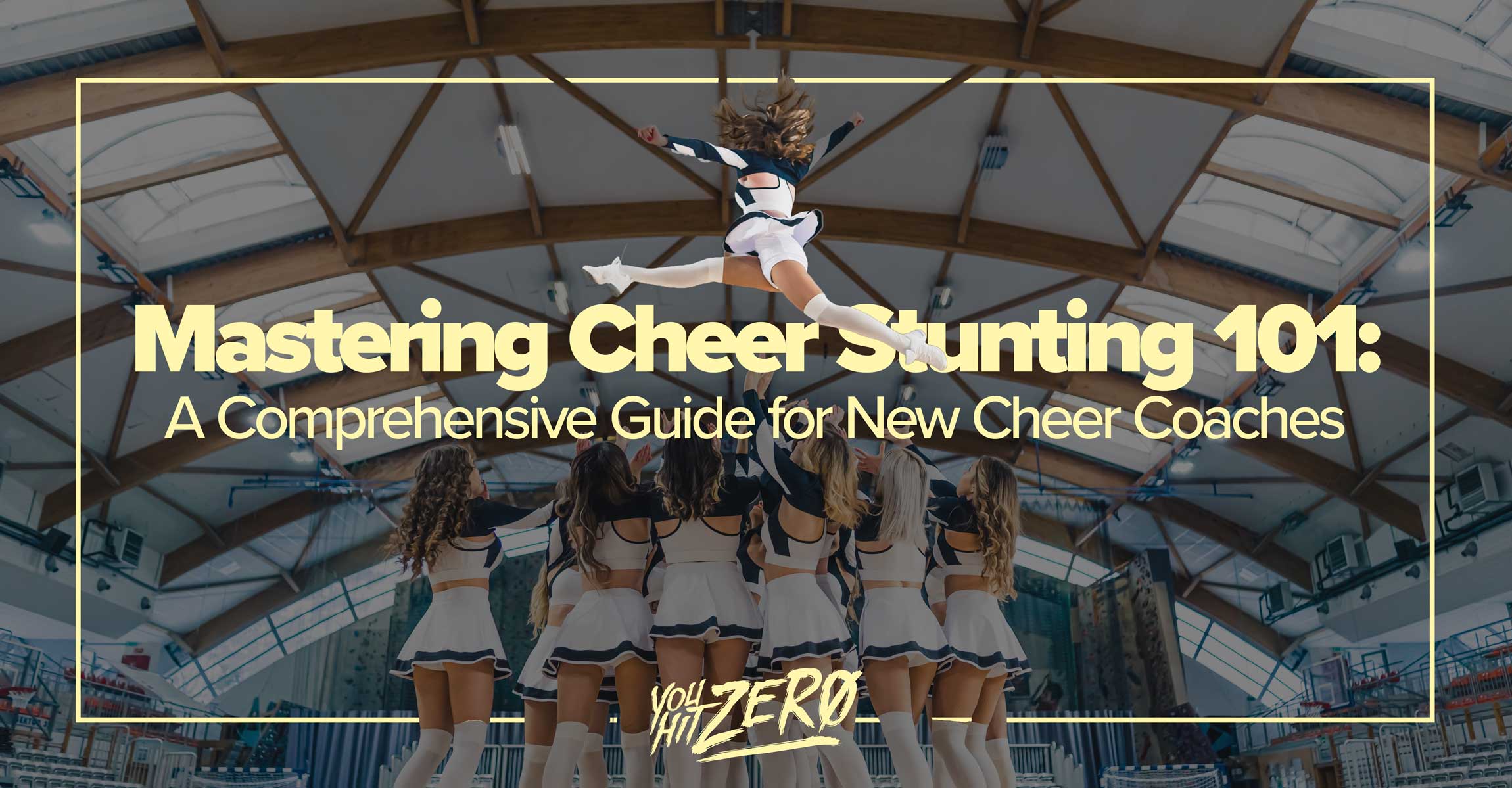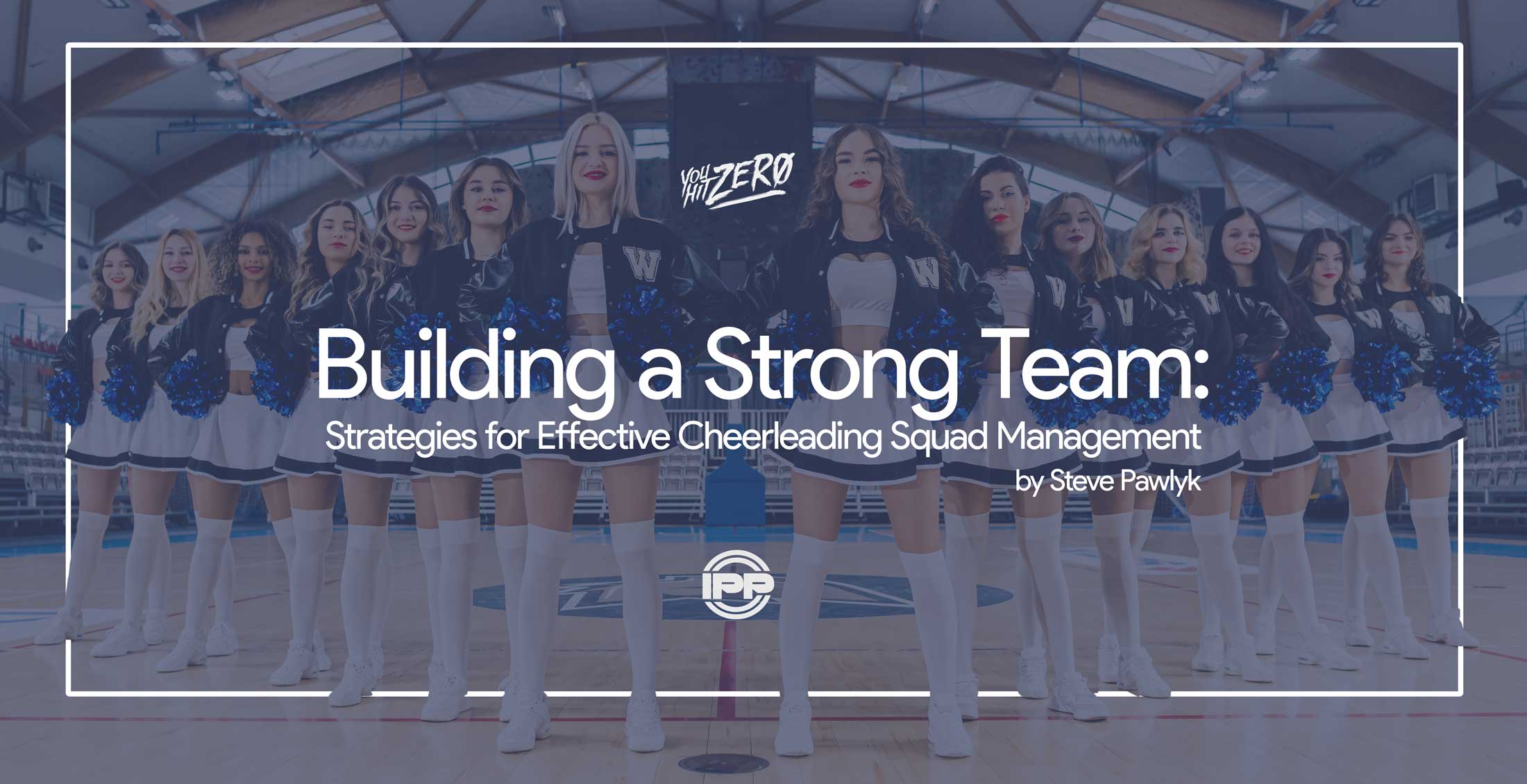By Steve Pawlyk
Published June 28, 2023
Every cheerleading performance is a mesmerizing blend of rhythm, athleticism, and sheer enthusiasm, with stunting taking center stage. Stunting, the act of lifting a team member during a performance, is not just about the high-flying spectacle; it requires precision, strength, and an intricate understanding of cheerleading guidelines. For any new cheer coach looking to ensure their team’s stunting routines are not only breathtaking but also adhere to American cheerleading rules and regulations, this guide offers a step-by-step breakdown.
Understanding the Key Roles in Cheer Stunting
Each stunt in cheerleading is made possible by the combined effort of the flyer, the bases, the backspot, and, sometimes, the front spot. All roles are bound by the safety guidelines set forth by the American Association of Cheerleading Coaches and Administrators (AACCA) and the U.S. All Star Federation (USASF).
- Flyer: Flyers need a solid sense of balance, flexibility, and confidence. They must follow safety guidelines, such as not reaching out to the crowd or performing any dangerous dismounts without proper support.
- Bases: Bases must be strong enough to lift and catch the flyer. They should always watch the flyer and not the crowd or competition, as stipulated by AACCA safety guidelines.
- Backspot: The backspot’s responsibility extends to ensuring the stunt’s timing, protecting the flyer’s head and neck, and maintaining constant awareness of the stunt group’s stability.
- Front Spot: This optional role can add an extra layer of safety, aiding in lifting the flyer, and providing additional stability to the stunt.
Stunt Conditioning Drills: Building Strength and Stability
The next step is conditioning your cheerleaders for stunting. Strength, flexibility, and balance exercises should be part of your team’s regular workout regimen, in line with the conditioning guidelines of the USASF.
- Core Strength Exercises: The core is fundamental for all stunting roles. Exercises such as planks, sit-ups, and Russian twists can help build core strength.
- Leg and Arm Strength Workouts: Squats, lunges, and push-ups can help bases and spotters develop the power they need to support flyers.
- Balance Drills: Balance exercises, such as yoga poses or balance beam exercises, are important for flyers to maintain their poise while aloft.
- Flexibility Training: Stretching routines, straddle stretches, and split routines help flyers achieve the flexibility they need to perform various stunts.
Stunt Progressions: Learning to Stunt Safely
Safety is paramount in cheerleading, and stunt progressions allow your squad to build confidence and skills while adhering to the AACCA’s risk management guidelines. Here are a few progression steps:
- Thigh Stand: This beginner-friendly stunt helps team members understand the basics of balance and coordination.
- Prep or Half Elevator: Here, the flyer stands on the bases’ hands at chest level. This stunt introduces height and requires more strength from bases.
- Full Elevator or Extension: This full-height stunt is a test of your team’s stunting abilities and should only be performed once the other levels are mastered.
It is essential to incorporate these progressions into your training regimen, making sure to adhere to the USASF Level Rules and Age Grids.
When teaching stunts, remember that every cheerleader’s safety is your priority. Use appropriate safety mats and spotting until your squad is fully comfortable with their stunts. As a cheer coach, your primary goal should be to foster an environment where your cheerleaders can safely learn, grow, and shine under your guidance.
The art of stunting is one of the many elements that make cheerleading performances compelling and breathtaking. By incorporating the right drills, exercises, and safety practices into your coaching, and always adhering to the cheerleading rules and regulations, you can ensure your squad delivers not just a great performance, but a safe one. Keep the spirit high, the music inspiring, and let the joy of cheerleading resonate with every stunt your team executes.
IPP's Premade Mixes are USA Cheer Compliant and customizable! Add Sound FX, swap songs, & more! Add your Team Name to the mix for only $10!










